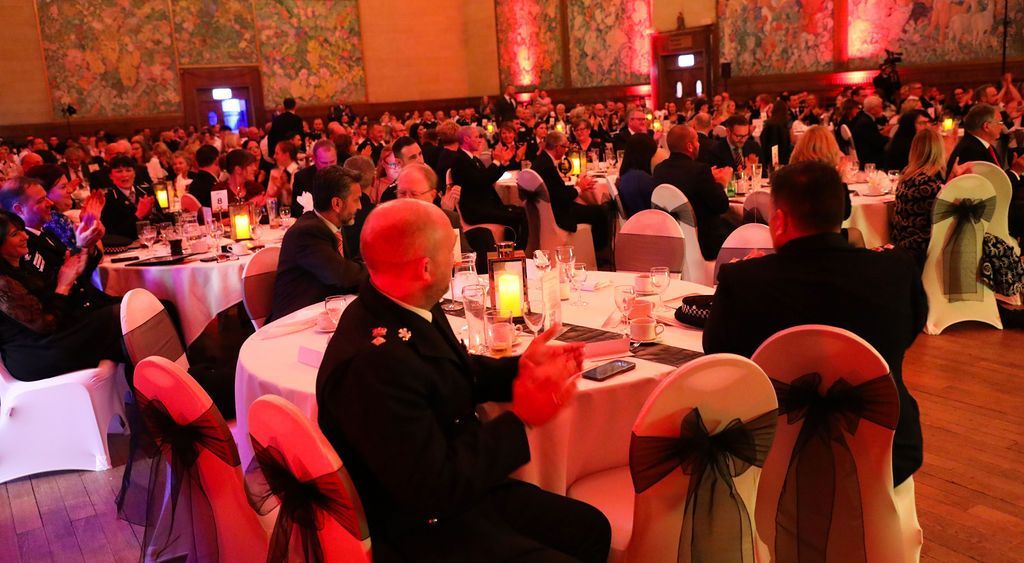Share this post
Following a spate of recent commercial burglaries in South Wales the Police have issued the following general advice for businesses
Slow Them Down
Time is a key factor in most burglaries. Burglars will put themselves at risk of being caught for as little time as possible. For them the risks are highest when they are conspicuous to passers-by or in the short time they have to complete their burglary after a burglar alarm has gone off. To prevent burglaries effectively, you should delay burglars at these times for as long as possible in order to make the risk seem unacceptable. The best way to do this is to put your resources into more than one of the types or levels of physical protection– the more barriers you create, the more you will slow them down.
Train Your Staff
You need full support from your staff. Teach them about the burglary prevention measures you have taken, and the correct use of any equipment you have installed.
- Reporting
suspicious circumstances
Explain to staff the importance, for example, of keeping a watchful eye for suspicious people or vehicles to prevent people ‘casing’your premises. - Get
them involved
You can develop their commitment to crime prevention by asking their opinions and ideas about the measures you are taking or propose to take. - Key
security
Above all, you should build key security into your staff training programme. Ensure that only specially selected staff have access to certain keys or combination locks, and that keys to secure areas are not left within the shop. Selected staff or managers must thoroughly understand their responsibilities for locking and securing fastenings on windows and doors, cabinets, internal offices where cash may be held, safes, rooflights and any other exits.
Look after Stock and Cash
- Removing
high value goods from window displays
You can protect portable high value goods such as jewellery or camcorders by removing them from display windows overnight, and locking them in a safe, or a secure room or cage. But be aware of the drawbacks – the extra workload on you and your staff, and the likelihood that empty windows will attract less window shopping and therefore less ‘informal’ policing. (Having more people around increases the chance of there being witnesses who can call the police.) - Hiding
stock
Burglars will be less likely to break into your stock room if you hide what is in it boarding or whitewashing over the windows. - Leave
the till open
By leaving the till visible, open and clearly empty, any burglars seeking cash are likely to lose interest. - Reducing
stock
The less you have in stock to attract the thief, the less can be taken. By coordinating with suppliers you can introduce ‘just in time’ deliveries, use catalogue deliveries or home deliveries to reduce stock levels. But while such methods may minimise stock taken in a burglary, they are unlikely to deter a burglar unless he or she knows stock levels are low. - Bank
your cash
If you do not leave cash in the store overnight it cannot be stolen in a burglary. Night safe facilities are available after opening hours. If you do not use a specialist cash collection agency be sure you vary the route you take to the bank and the times you leave the shop. - Dummy
goods
In some cases, using dummy goods, (such as coloured water in wine bottles in off-licence displays, or empty CDs and cassette tapes) will deter some opportunistic burglars who only seek display goods, but you have to make it clear that the goods are fake. This approach will not deter burglars seeking high value stock from inside the shop.
Physically Protect the Target
- Strengthening
Potential Entrances
Use high quality (hardwood) door frames and doors, steel reinforcing and anti-thrust bolts on vulnerable doors, and bars on vulnerable windows. Glass panels in doors are particularly vulnerable to attack and ideally they should be avoided or boarded up. Ask for materials that comply at least to BS8220 for the construction industry as a minimum standard of strength. And the locks on doors should be at least up to the quality of a five lever mortice lock conforming to BS3621. - Grilles
and Shutters
These can be an excellent way of deterring burglars, but externally fitted varieties will need planning permission. There are three main types:
·Internal grilles are usually a thin lattice mesh that is lowered just behind the window. (Note that these do not protect the window and glass replacement is often the greatest cost in a burglary)
·External metal grilles are usually of the ‘tube and link’ design
·External roller shutters (made from solid aluminium or steel strips or laths which can have ‘windows’ punched into them to allow window shoppers a glimpse of your wares)
External
grilles and shutters usually roll up into a housing behind the fascia while the
shop is trading; some are taken down in sections and stored inside the shop.
External shutters are strongly resisted by some planning authorities. Firstly,
badly designed or solid shutters prevent window shopping and create a fortress
– like hostile environment, reducing the numbers of passers-by at night. Which
in turn may increase the level of crime. Secondly, their horizontal design and
projecting housings seldom fit aesthetically with the design of a building,
(and this is of particular importance in the case of listed buildings and
conservation areas).
- Fit
grilles inside
You can protect high value goods within the shop floor area by securing high risk display cabinets, such as for tobacco displays, with protective grilles and shutters. - Glass
‘film’
A reasonably cheap way of improving the strength of glass windows against smash and grab attacks is by applying a plastic film, available in various grades, to the rear of the window. This is a good deterrent but filmed glass windows are slightly less clear than non-filmed windows. Mirror-finished film on rear windows will both increase the strength of the glass and fully restrict a burglar’s view into rear storage areas. - Laminated
glass
This is very difficult to break through in a ‘smash and grab’ attack because it is made by bonding a layer of tough plastic between sheets of glass, and this will hold the window together even after the glass has broken. However, to be effective you must ensure that window frames and fixings are equally strong, and bear in mind that you will often have to pay to replace the glass, even if the burglars were not able to take your stock. - Safes
A good quality safe will protect cash and valuable items overnight but you should take the added precaution of bolting it in place and positioning it discreetly. If you have, or are fitting a burglar alarm, you can include sensors inside the safe that will set the alarm off if the safe is opened. But beware buying a fire safe that doesn’t necessarily protect against theft, and vice versa. Your insurers will be able to help you choose a suitable safe and suggest minimum standards of specification. - Secure
cages
Secure cages in the stock room can provide additional security for high value stock. They can be constructed using expanded metal sections or created by increasing the protection within an existing internal room. - Vehicle
traps
Fixing bollards into the ground around your premises will protect against ram raiders, but you will need to consult your local planning authority and your landlord. Some designs of bollard can be removed during trading hours. Large concrete plant containers can be used as an alternative to bollards. ‘Road blocker’ devices can be used to close off vehicle entrance overnight. Much depends on your location and circumstances. - The
overall design
If you are planning a move to a new building or intend making major refurbishments, you have an excellent opportunity to build preventive measures into the design of your premises. For example, you can build stall risers, put in multi-pane windows, ensure telephone lines are hidden and protect vehicle approaches. The Secured by Design scheme has been developed to help identify builders who have consulted the police and have incorporated specific crime prevention measures. - And
if it happens…
Remember that if you have been unfortunate enough to have been burgled, the statistics show that your risk of being burgled again is much higher. So you will need to upgrade your defences and not merely put things back the way they were before the burglary. Obviously if an attack takes place you will have very little time to liaise with planning authorities and so on – so make contingency plans now, and arrange what you will do if the worst happens.
Watching and Deterring Intruders
- Intruder
alarms
You may deter some potential burglars if you display evidence that you have fitted an intruder alarm. Others may be scared off if they are breaking in and hear alarm bells go off. Read about different types of burglar alarms and how to buy one. - Video
surveillance
Burglars are deterred by closed circuit television cameras monitoring the outside or inside of the building at night and they can also help police to detect the burglars. Stringent codes of practice need to be followed – including ensuring the date and time are incorporated into the recording – before video evidence can be successfully used in prosecution. - Controlling
vehicle access
If a burglar cannot bring a vehicle close to your premises because his access is barred you eliminate the ram raider and become less attractive proposition to burglars who depend on vehicles to drive stock away. - Locking
escape routes
Commercial burglars often plan to use exit routes that are different from their entry routes. In view of this, you need to make it as difficult to get out as it is to get in. Make sure windows, doors, panic escape bars and internal doors are well locked overnight, and shut off the power supply for loading bay shutters. Make sure rear windows, doors, escape routes, and internal doors are well locked, and isolate the power supply for loading bay shutters. - Lighting
If you install lights that are activated by someone approaching your shop you may deter some potential burglars. Where your shop is overlooked by passers-by you will increase the chances of an intruder being noticed if you simply increase the level of lighting both inside and outside the building. But take care: if your shop is never overlooked at night (say because it is in an out-of-town shopping park) then increased lighting may simply make it easier for burglars to work.
Share this post









